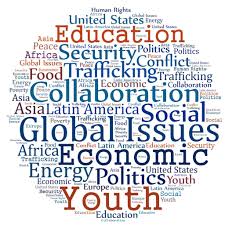Global Health and Education Initiatives: Building Blocks for Sustainable Development

Updated at: 2023-08-13 15:59:22 (2 years ago by Melkisedeck Leon Shine)
Global Health and Education Initiatives: Building Blocks for Sustainable Development
-
Introduction: The world we live in today is faced with numerous challenges, including poverty, inequality, and environmental degradation. To address these pressing issues and promote global poverty alleviation and sustainable development, it is vital to focus on global health and education initiatives.
-
The importance of global health initiatives: Health is a fundamental human right and a prerequisite for sustainable development. By investing in global health initiatives, we can improve the well-being of individuals, communities, and nations. This includes efforts to prevent and control infectious diseases, promote maternal and child health, and strengthen healthcare systems.
-
The role of education in sustainable development: Education is a powerful tool for empowering individuals and transforming societies. It equips individuals with the knowledge, skills, and attitudes necessary to build a better future. Education also promotes gender equality, reduces poverty, and fosters economic growth.
-
The link between health and education: Health and education are interconnected. When individuals are healthy, they are more likely to attend school, learn effectively, and reach their full potential. Similarly, education plays a crucial role in promoting health literacy, enabling individuals to make informed decisions about their health and well-being.
-
Examples of successful initiatives: Many global health and education initiatives have made significant strides in promoting sustainable development. For instance, the Global Fund to Fight AIDS, Tuberculosis, and Malaria has saved millions of lives and contributed to the reduction of these diseases. The Global Partnership for Education has helped millions of children access quality education, particularly in low-income countries.
-
The role of technology: In today's interconnected world, technology has emerged as a powerful tool for promoting global poverty alleviation and sustainable development. From telemedicine to e-learning platforms, technology has the potential to bridge the gap in healthcare and education, especially in remote and underserved areas.
-
The importance of partnerships: Building sustainable development requires collaboration between governments, civil society organizations, academia, and the private sector. By working together, we can pool resources, expertise, and knowledge to address complex challenges and achieve meaningful impact.
-
The need for investment: Funding is crucial for the success of global health and education initiatives. Governments and international organizations must allocate sufficient resources to ensure that these initiatives are adequately supported. Additionally, innovative financing mechanisms, such as public-private partnerships and impact investments, can mobilize additional funds for sustainable development.
-
Empowering local communities: To promote sustainable development, it is essential to empower local communities and involve them in decision-making processes. By engaging community members and listening to their needs, initiatives can be tailored to their specific context, ensuring long-term sustainability and impact.
-
The role of advocacy: Advocacy plays a critical role in raising awareness, mobilizing support, and influencing policies for global poverty alleviation and sustainable development. By speaking out and advocating for change, individuals can contribute to shaping a future that is fair, inclusive, and environmentally sustainable.
-
The power of education and knowledge sharing: Education is not limited to formal classrooms. It can also be achieved through knowledge sharing and capacity building. By sharing best practices, lessons learned, and success stories, individuals and organizations can inspire others and foster a global community of learners and change-makers.
-
Promoting global unity: Sustainable development requires global unity and cooperation. It is essential to recognize that we are all interconnected and share a common responsibility for the well-being of our planet and its inhabitants. By fostering a sense of global citizenship, we can work together towards a more inclusive and sustainable world.
-
Building skills for promotion of global poverty alleviation and sustainable development: To actively contribute to global poverty alleviation and sustainable development, individuals can develop various skills. These include leadership, problem-solving, communication, and collaboration skills. By continuously learning and honing these skills, individuals can become effective agents of change.
-
Conclusion: Global health and education initiatives are fundamental building blocks for sustainable development. By investing in these areas and promoting global poverty alleviation, we can create a world where everyone has access to quality healthcare and education. Together, let us build a future that is equitable, inclusive, and sustainable.
-
Follow-up questions: How can you contribute to global poverty alleviation and sustainable development in your community? What skills do you need to develop to become an effective advocate for change? Share this article with others and join the movement for a better world. #GlobalDevelopment #SustainableFuture #EndPoverty #EducationForAll

